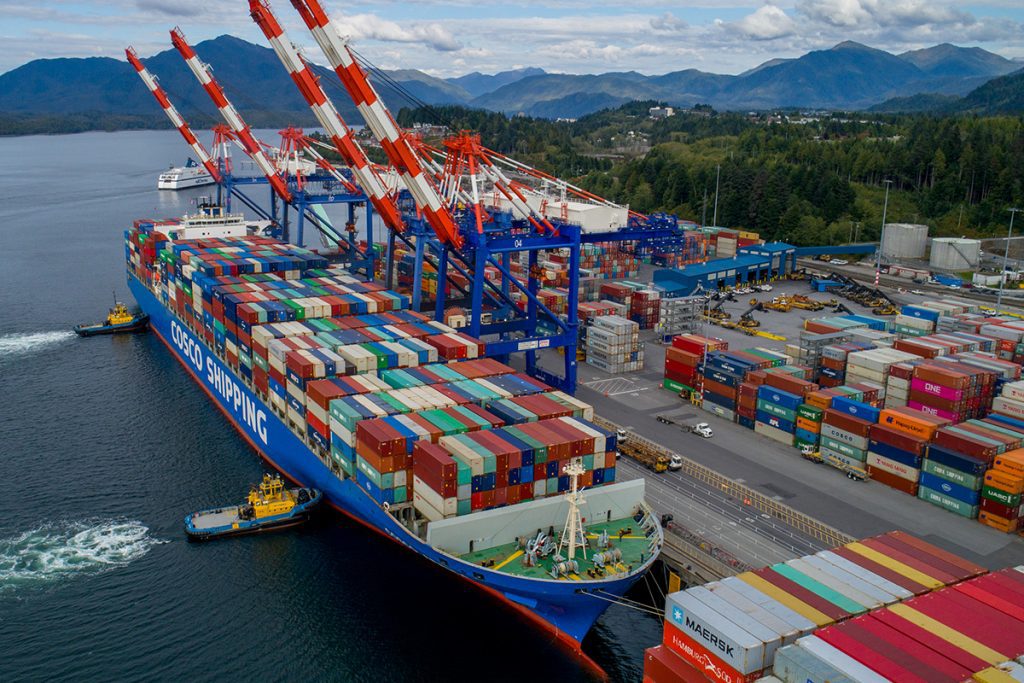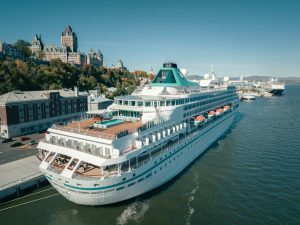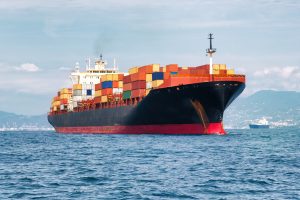The major route cost disadvantages of the U.S. West Coast gateways will likely lead to further capture of intact intermodal Asian import traffic flows by Vancouver and Prince Rupert (our photo), especially as planned terminal expansions are completed at the two Canadian ports, according to a report by the Mercator consulting firm commissioned by the San Francisco-based Pacific Maritime Association (PMA).
“Even without the development of Port Metro Vancouver’s Roberts Bank Terminal 2 later this decade, capacity expansion projects already underway in container terminals in Prince Rupert and Vancouver could provide those two ports with the physical ability to divert approximately 15% of the intact intermodal import volumes now moving through San Pedro Bay and Puget Sound,” said the report referring to the U.S. ports of Los Angeles, Long Beach, Seattle and Tacoma.
Higher terminal-to-rail costs and higher land transport costs are the key factors underpinning the route cost advantages that the BC ports have vis-à-vis the U.S. gateways for Chicago and other inland markets such Memphis and Minneapolis.
Mercator estimates that U.S. West Coast ports handled 2.85 million TEUs of intact intermodal cargo in 2019. The ports of Vancouver and Prince Rupert, which have steadily eroded U.S. West Coast market share for intact intermodal cargo over the past five years, will have the capacity to handle at least 400,000 TEUs of new capacity by 2022. This is roughly equivalent to 15 percent of the intact intermodal cargo currently flowing through San Pedro Bay and the Puget Sound, according to Mercator.
The volume that is at risk could grow even higher as the Canadian ports expand their capacities in coming years. Mercator identifies the Chicago and Memphis markets as the most susceptible to Canadian competition because of their direct connection to the British Columbia ports by the two primary Canadian railroads.
For intact intermodal cargo, the British Columbia ports have significant route cost advantages as high as $600 per container over U.S. West Coast ports. This cost advantage is due to significantly lower rail rates charged by the Canadian railroads, as well as lower terminal costs to move the containers from ships to trains. The Canadian ports’ cost advantage is even greater due to surcharges imposed at U.S. gateways, including the Harbor Maintenance Fee applied to carriers at West Coast ports and a transit fee for cargo in Southern California to access the Alameda Corridor.
“The U.S. West Coast ports continue to be the largest North American gateway for Asian imports, but that lead is being eroded not just by U.S. ports in the Gulf and East Coasts, but also by the two major ports in British Columbia,” said PMA CEO Jim McKenna. “While the intact intermodal cargo identified in the Mercator study may account for a small percentage of our overall volume, it’s still hundreds of thousands of containers each year representing millions of dollars in economic activity. This growing source of competition for valuable discretionary cargo is yet another wake-up call, especially for the Ports of LA, Long Beach, Seattle and Tacoma where most intermodal cargo is currently handled.” Photo: Port of Prince Rupert








